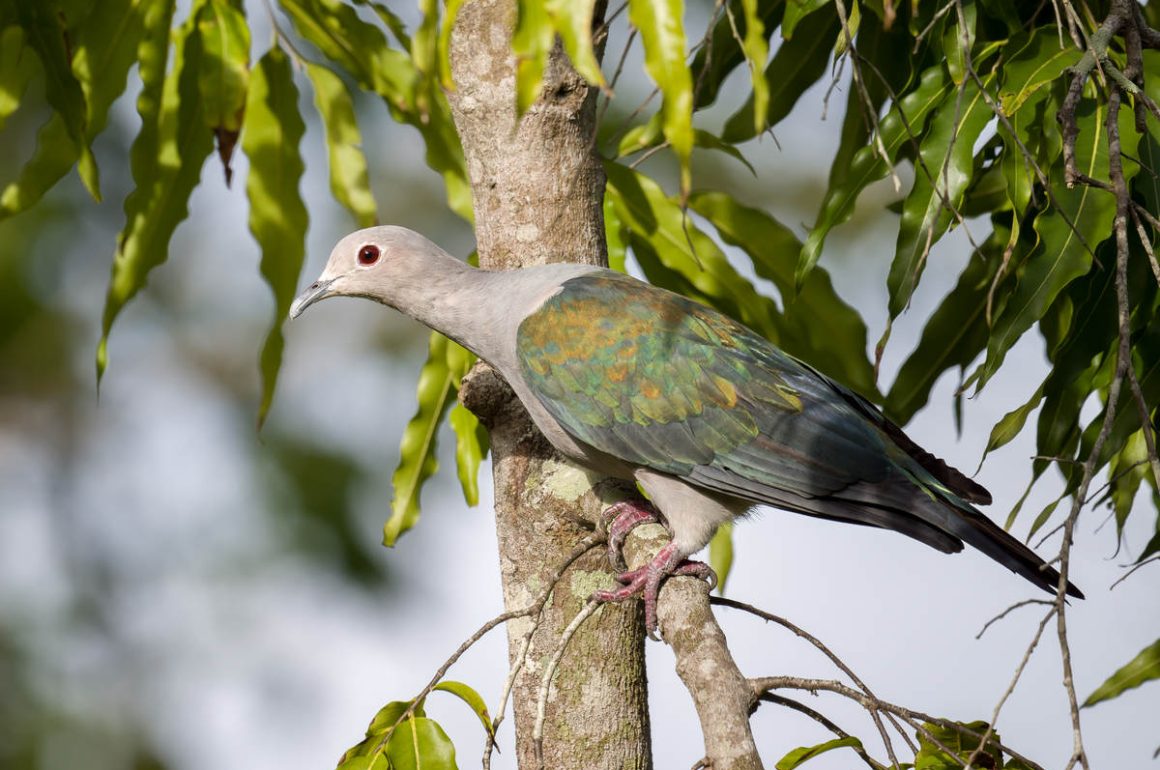
As the rice paddies near Kota Kinabalu described in an earlier post, Tanjung Aru beach is not really a major birding spot in its own right. However, it is only a short taxi ride away from the airport where most travelers will arrive at – better to see birds instead of just eating fast food while waiting for a connecting flight.
Tanjung Aru beach is a popular spot for the locals to enjoy the seaside, watch the sunset, and choose between a huge variety of fruit juices sold at a slightly chaotic food market. Even better, just a few meters away from the food vendors, it is not too crowded, and the palm trees attract a number of birds, including two species of parrots. The first one is the Blue-naped Parrot.
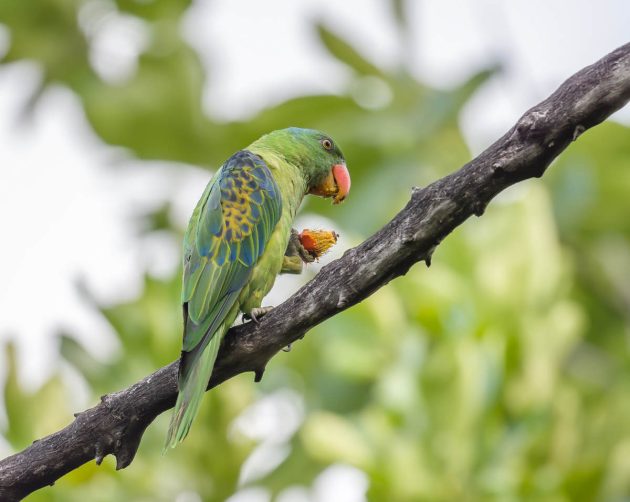
The HBW describes the population of the Blue-naped Parrot at Kota Kinabalu as feral – sounds a bit harsh to me given the proximity of Kota Kinabalu to those areas where the species is deemed a proper resident.
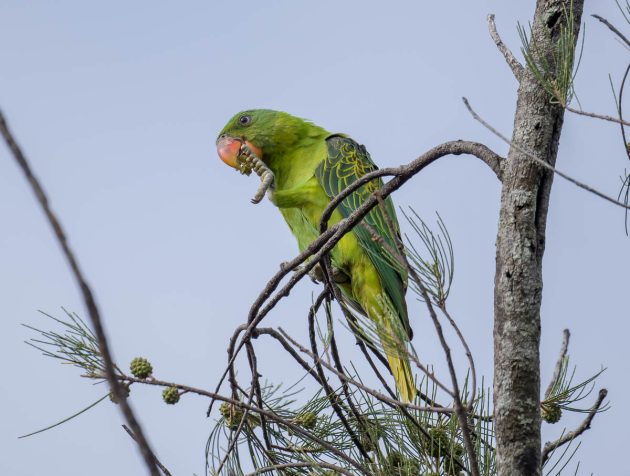
That is mainly the Philippines, as indicated by the species name lucionensis (Luzon is the Philippines’ biggest island).
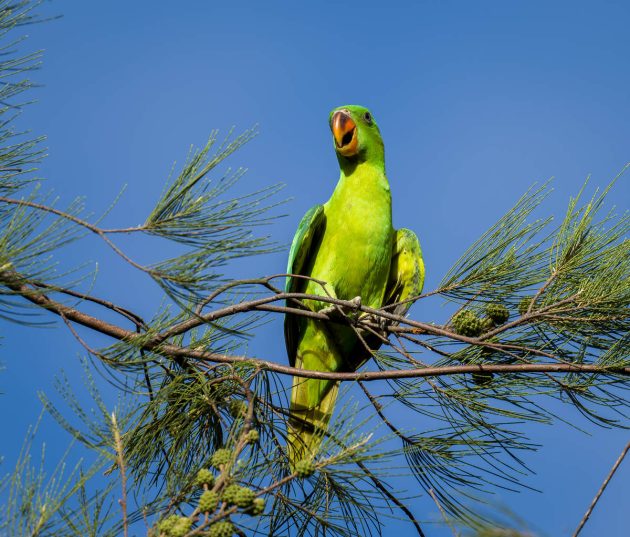
It is listed as Near Threatened, partly due to the usual occurrence of illegal trade for the pet market.
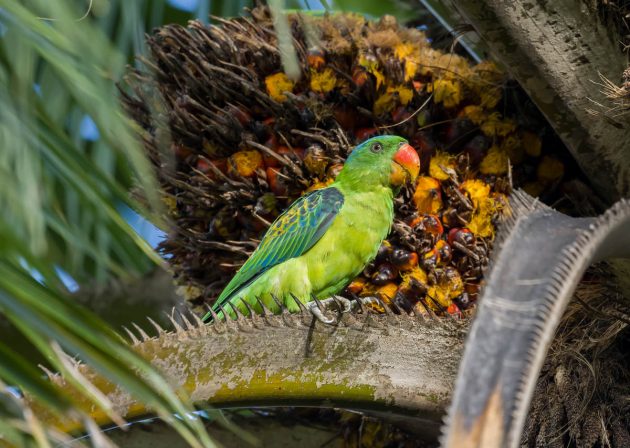
It seems there is not much research done specifically on Blue-naped Parrots – the only paper I could find featuring the species was from 1981 and had the somewhat unappealing title “A Preliminary Study Comparing the Pharmacokinetics of Ampicillin Given Orally and Intramuscularly to Psittacines: Amazon Parrots (Amazond spp.) and Blue-Naped Parrots (Tanygnathus lucionensis)”. Instead of reading that paper, maybe watch the video?
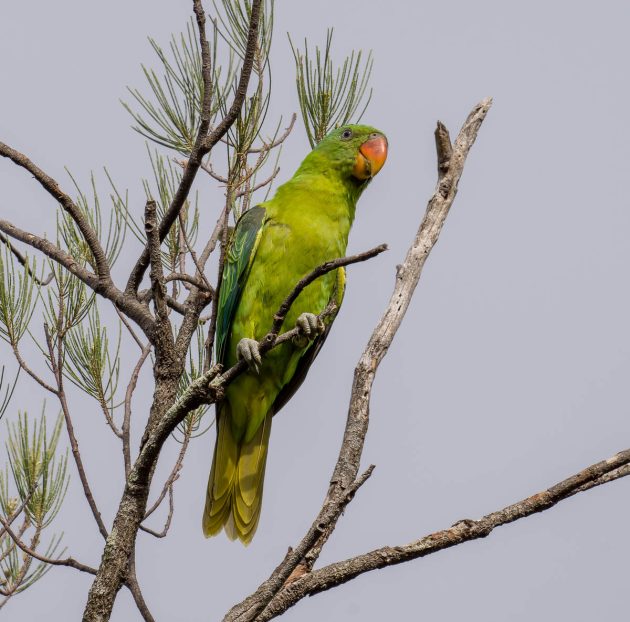
A paper by the Department of Environment and Natural Resources of the Philippines argues that trapping the parrot is essentially a way of wasting money. Apparently, the buying price per Blue-naped Parrot in Bataraza town in Palawan is only about US$ 4 while its value for trade and tourism is about US$ 100 and its ecological value in forest ecosystems is US$ 3600 per bird. Unfortunately, this may not impress the villager who can earn US$ 4 for a trapped bird. Or US$ 8 for the pair below.
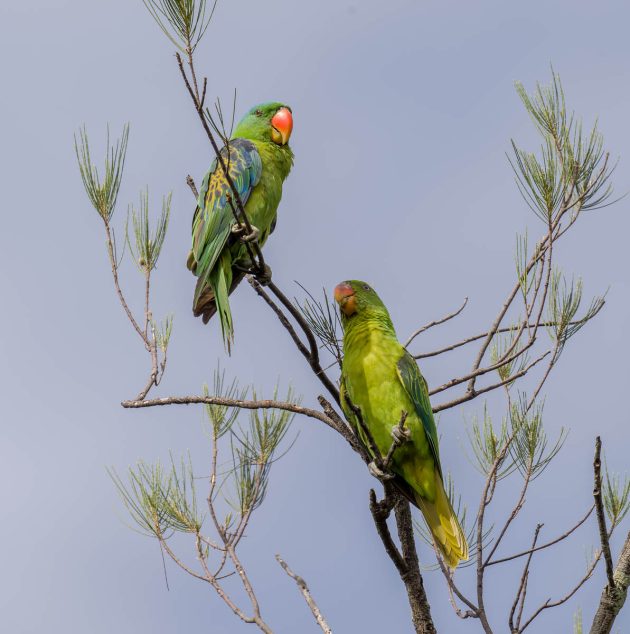
The Long-tailed Parakeet can sometimes be seen here feeding right next to the Blue-naped Parrot.
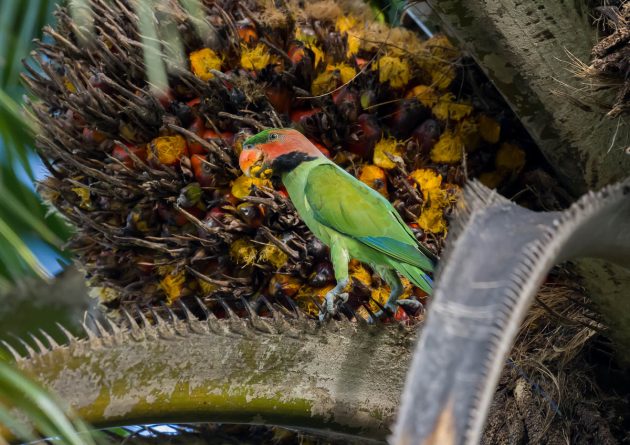
It is listed as vulnerable, again as a consequence of illegal trade and habitat loss. There is a song by a band named Godspeed You! Black Emperor titled “Bosses hang”. As it is entirely an instrumental, I think we can for our purposes easily rename it to “Bird Trappers Hang”.
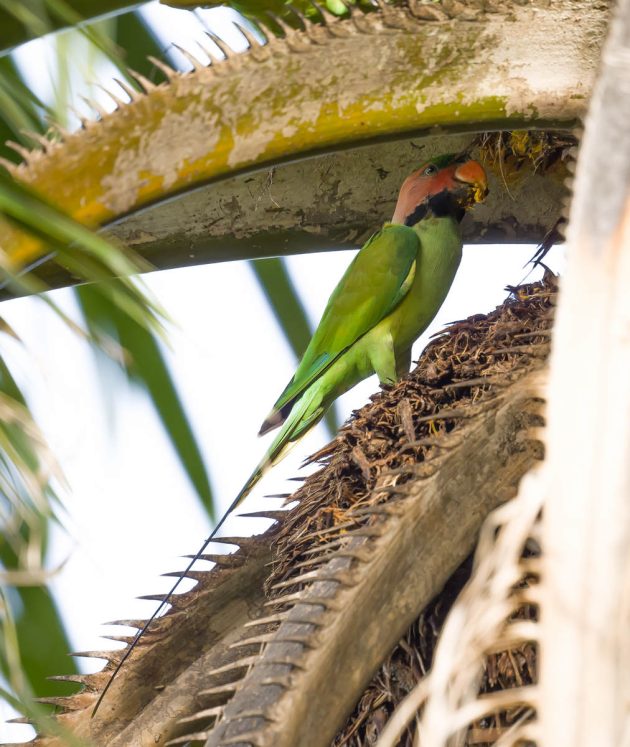
Wikipedia describes the Long-tailed Parakeet as “an extremely social bird, always seen communicating with other birds of its species”, …
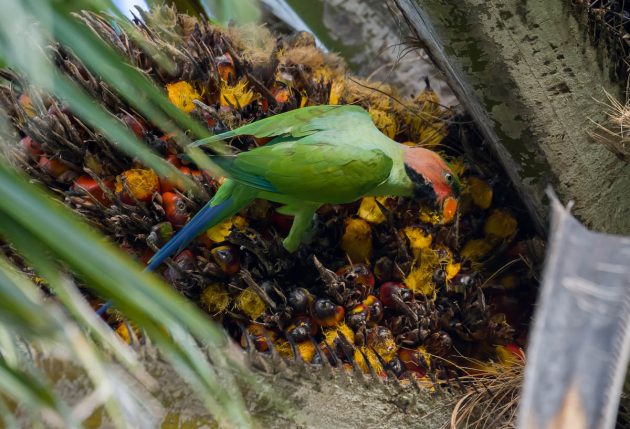
… adding that it also is “a curious species, as it is often seen playing with sticks or other materials found in its environment”.
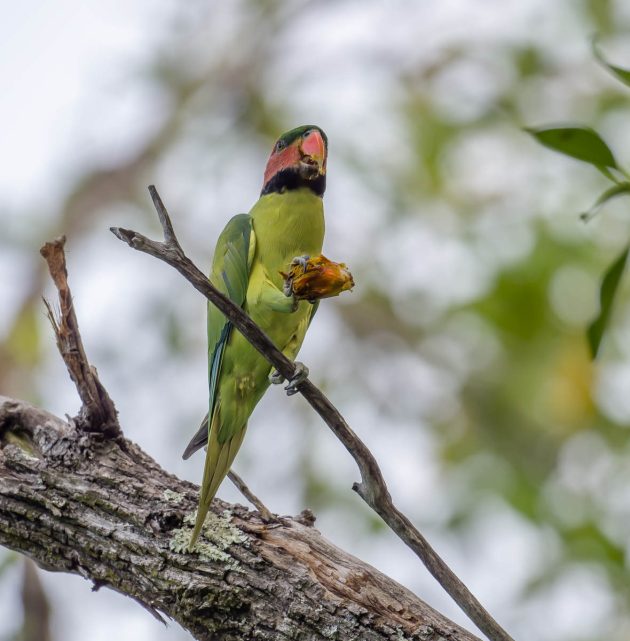
There are also two species of pigeons. The Green Imperial Pigeon is described as a “stately large pigeon” on eBird, probably because calling it an “imperial-looking pigeon” would sound a bit stupid.
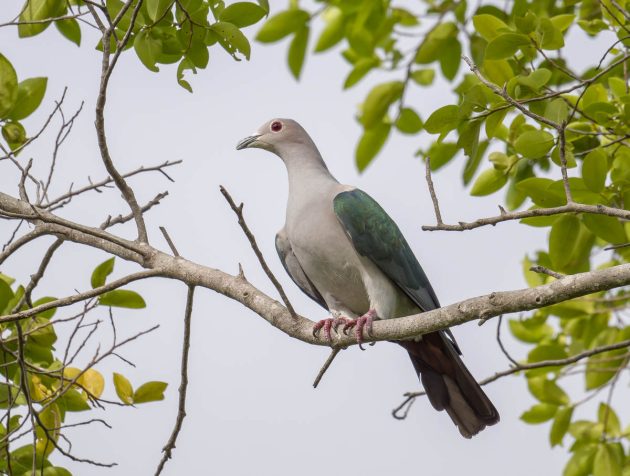
It has an extensive entry in the HBW (for example, there is an entry on its molt that is longer than the complete species entry for many other bird species), indicating that it probably lives in comfortable proximity to a large number of ornithologists.
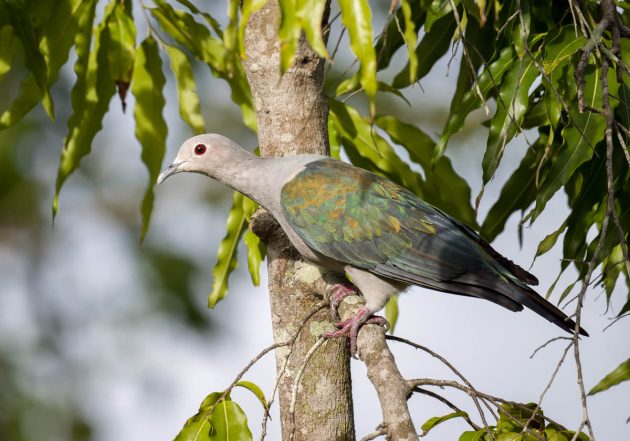
On the other hand, some data that one would think is relatively easy to obtain, such as the incubation period, seems to be unavailable.
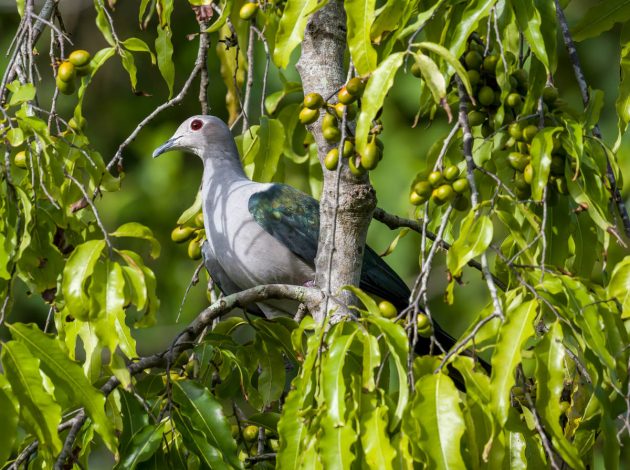
As usual when species are well-examined, the number of subspecies seems to multiply, though apparently some of these subspecies have recently been culled in order to simplify the life of birders.
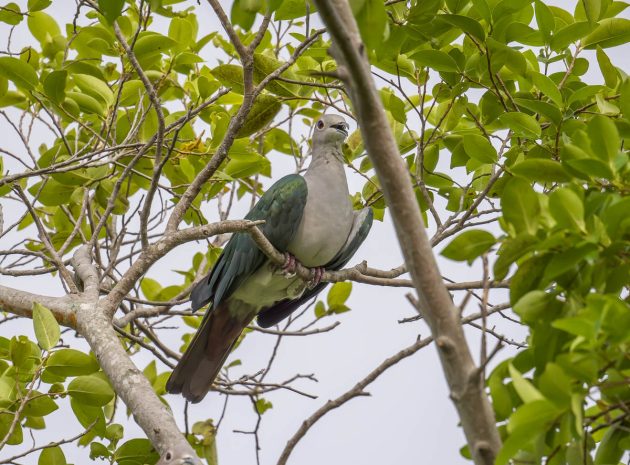
Maybe some subspecies such as this one described in a paper from 1947 simply fell out of fashion.
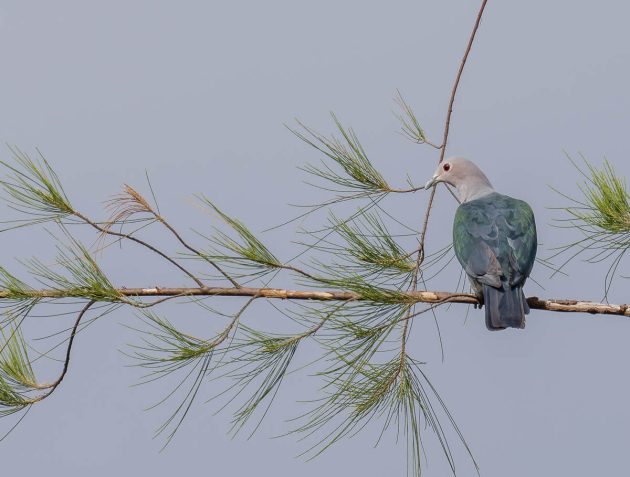
Green Imperial Pigeons have also been observed exposing their “armpits” in the rain. I do that too, though usually in the shower after running, not outside in the rain. Amazing parallels. However, there are no videos of me available online, which is different to the pigeon – it can be watched here and here and here (though all three videos look very similar).
Another pigeon at Tanjung Aru beach is the Pink-necked Green Pigeon. Like many humans, it is presumed to be monogamous (source: HBW).
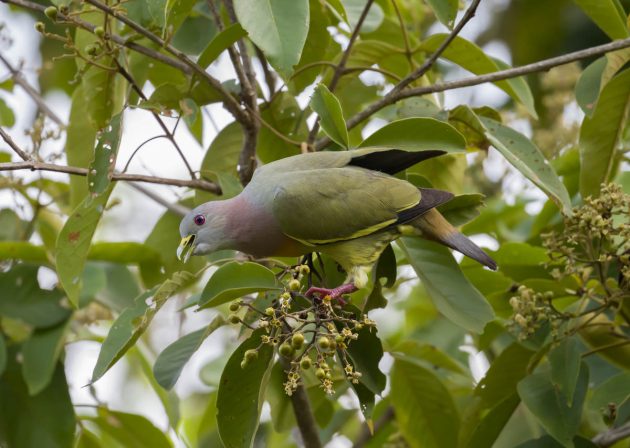
The US company NE Pigeon Supplies presumably is involved in supplying materials to keep and breed pigeons. They also have a page dedicated to the Pink-necked Green Pigeon. However, the first photo on that page shows not a Pink-necked Green Pigeon but rather a Common Emerald Dove, which somehow makes me doubt their expertise.
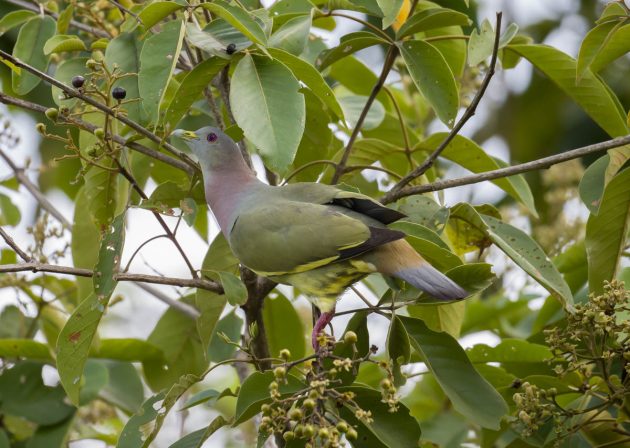
A study conducted in Singapore found that forest-edge frugivores such as the Pink-necked Green Pigeon are especially vulnerable to building collisions.
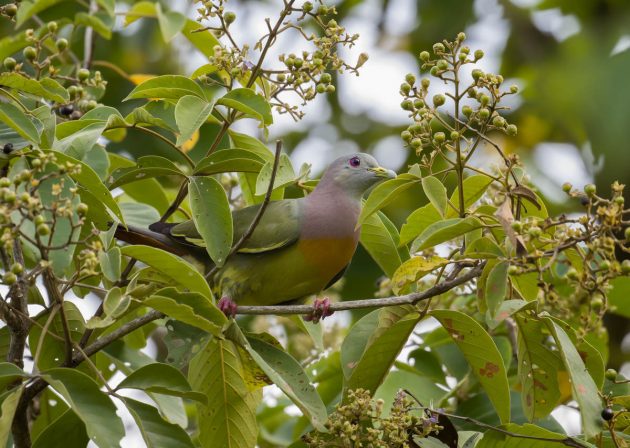
A Malaysian paper includes the Pink-necked Green Pigeon in a list of “aesthetically valuable urban bird species” and lists the species as the second most common one within this category and in urban areas. Still, a weird and uncomfortably human-centric way of categorizing bird species, if you ask me, which I am pretty sure you will not.
In any case, I wonder whether the female – not quite as colorful as the male, see below – also qualifies as an “aesthetically valuable urban bird species”.
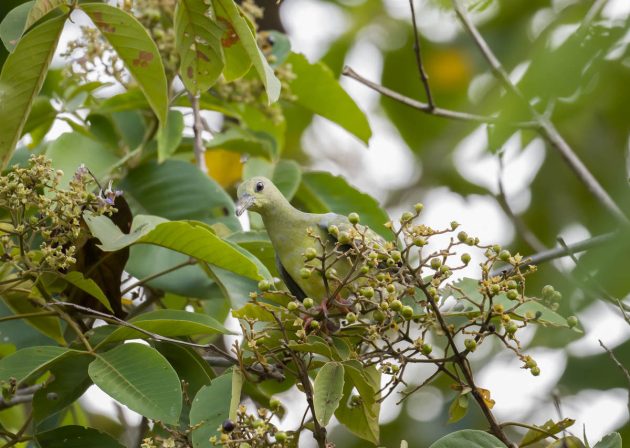
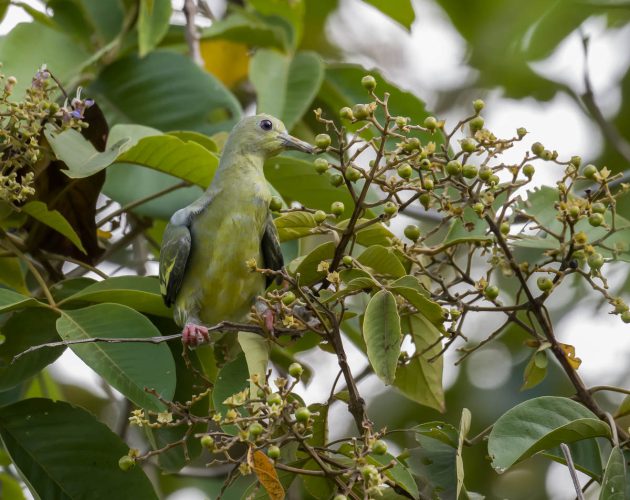
The third pigeon species around here is the Zebra Dove.
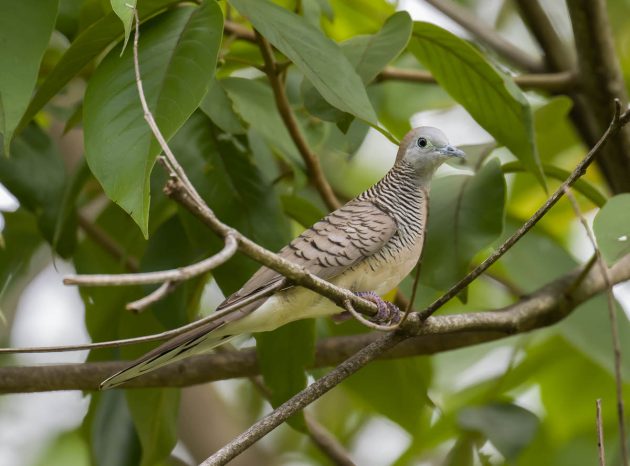
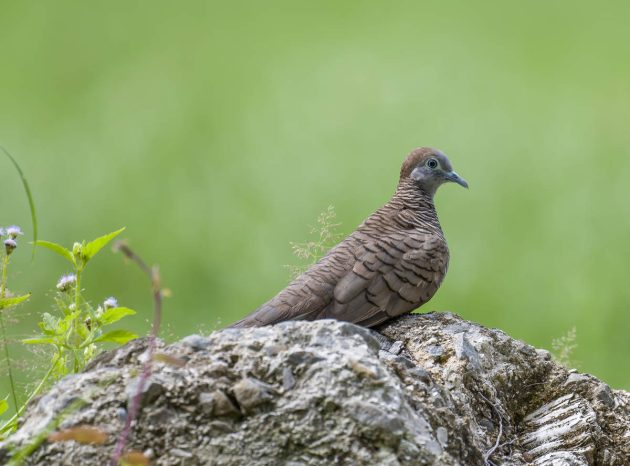
I could imagine that if I lived in Kota Kinabalu, I would eventually get tired of watching and taking photos of sunbirds, such as this Brown-throated Sunbird …
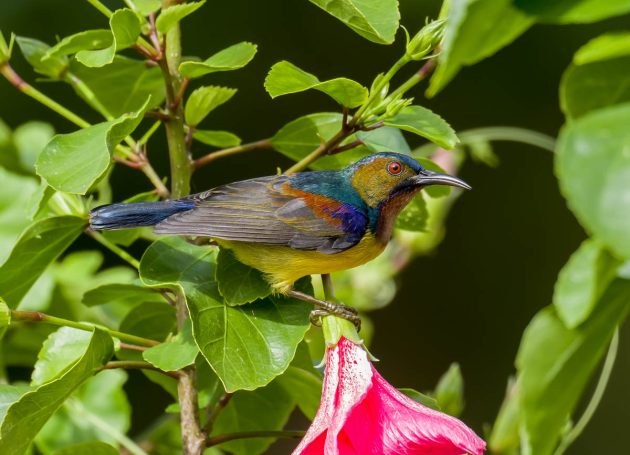
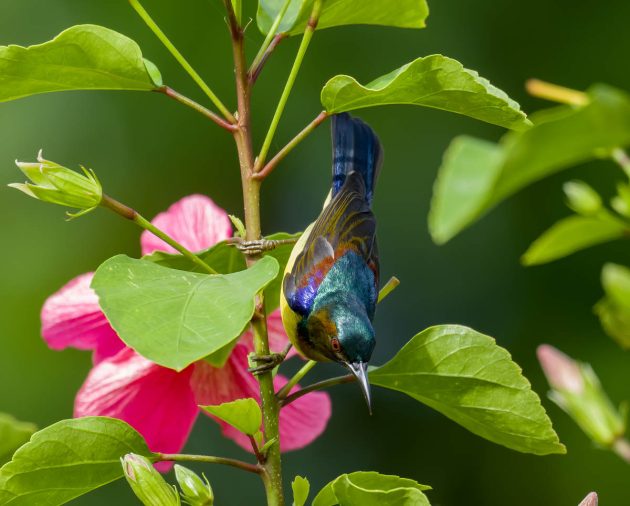
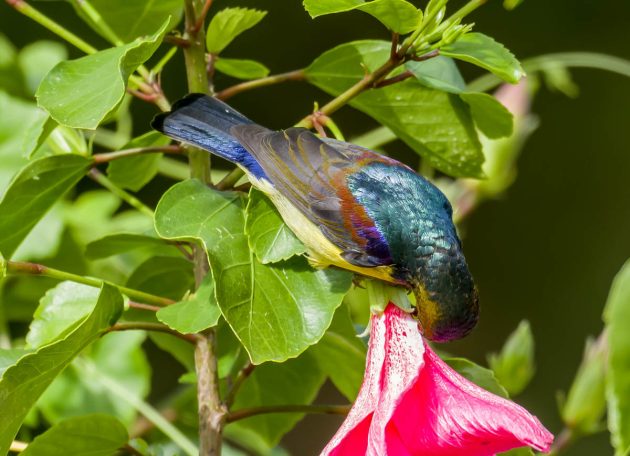
… or this Olive-backed Sunbird.
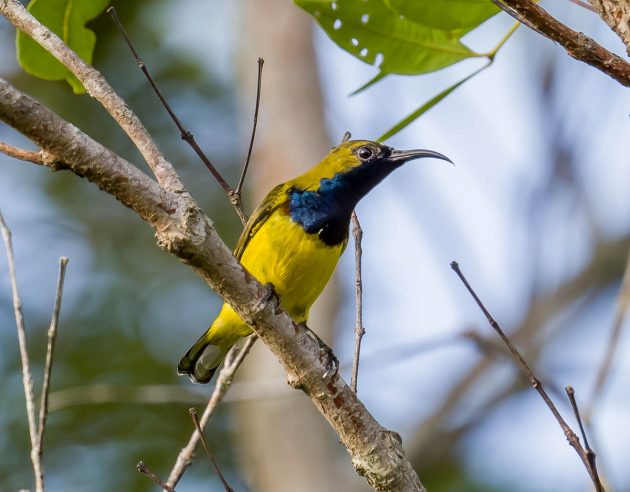
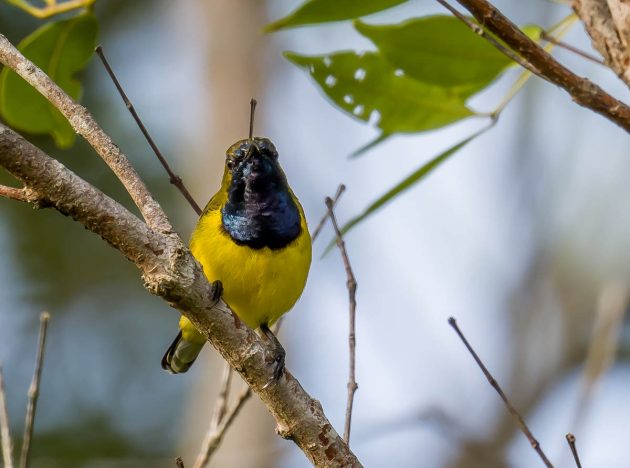
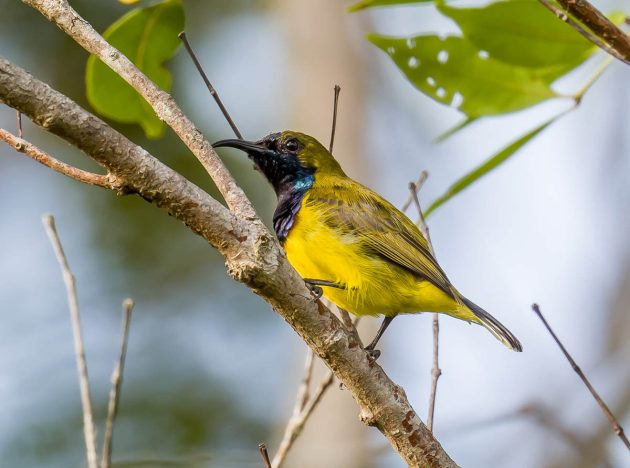
But it would take many years.
When Sunda Pygmy Woodpeckers want to enjoy a day out on the beach, they also come to Tanjung Aru.
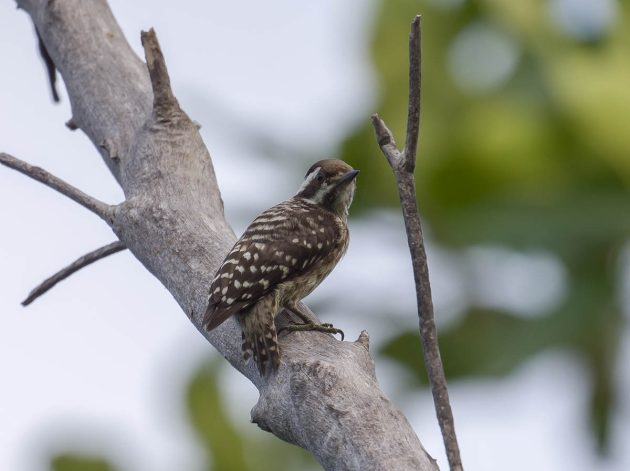
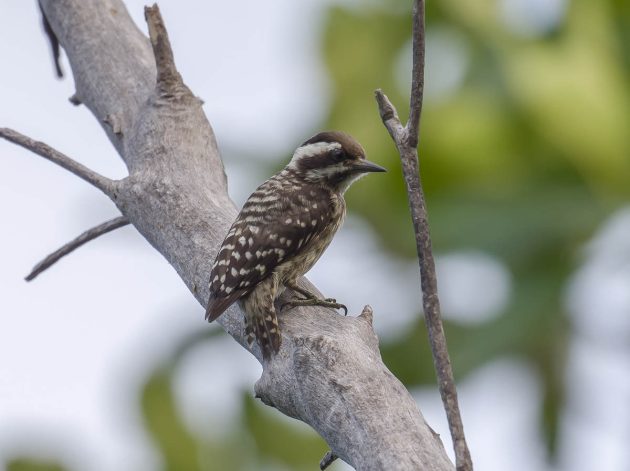
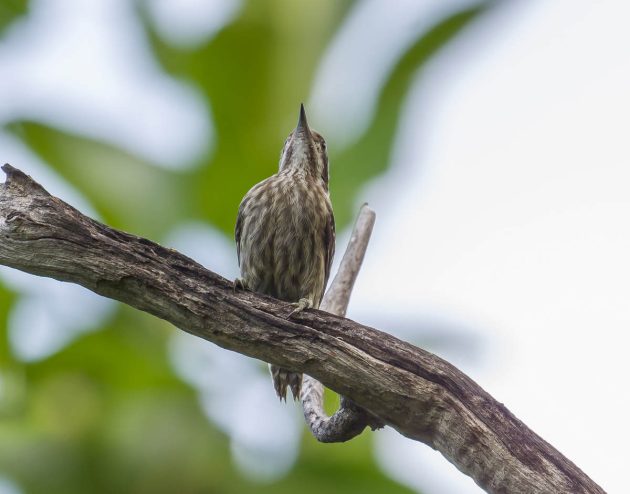
For completeness’ sake, a few more species that can easily be seen here: Asian Glossy Starling …
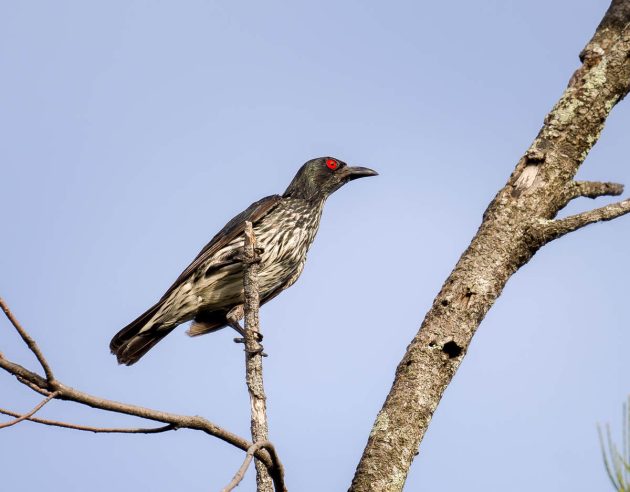
… White-breasted Waterhen …
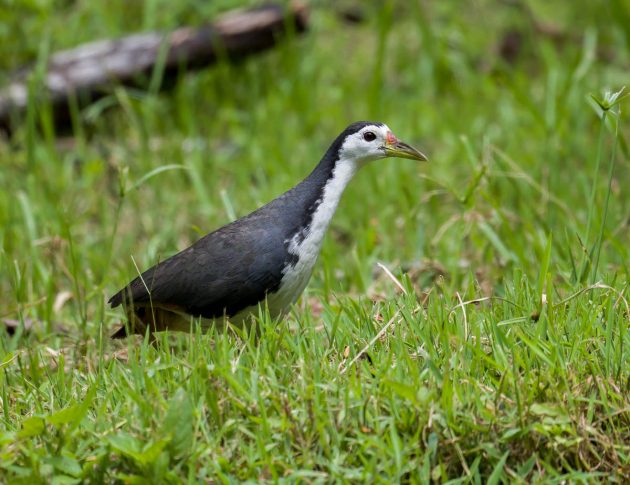
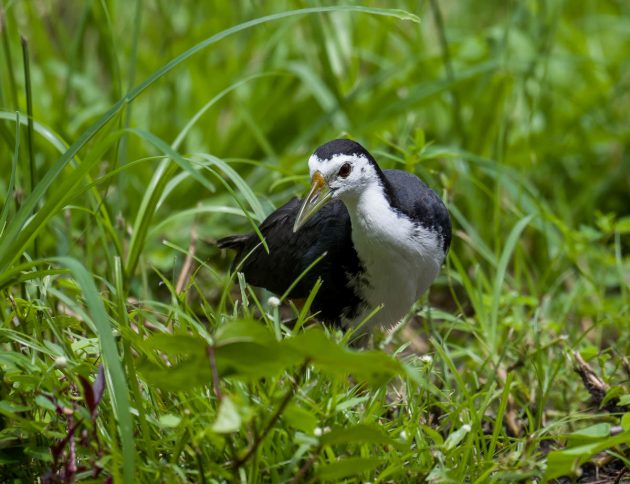
… and Yellow-vented Bulbul.
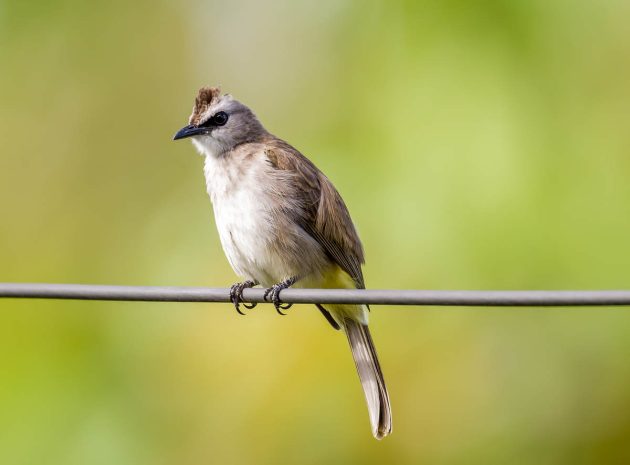
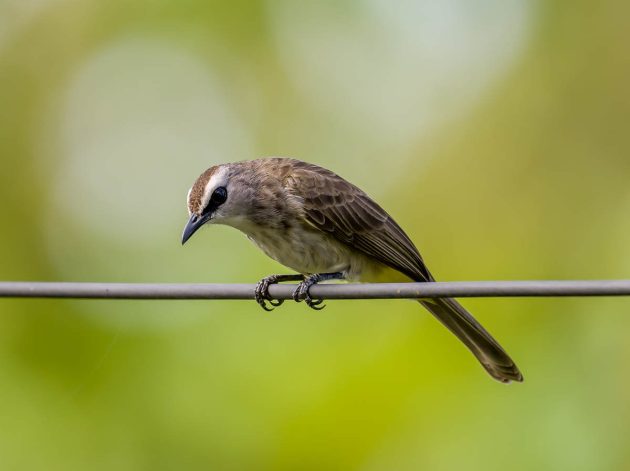
While birds have developed one way of dealing with gravity, flying, other animals have found different ways, for example, just ignoring it.
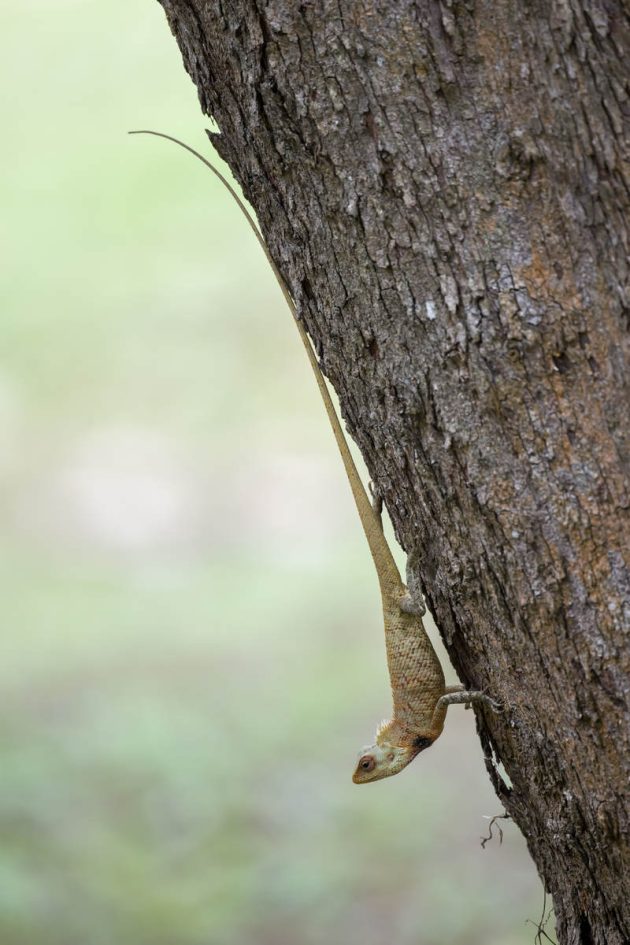
Some of the distant relatives of this lizard presumably were styled by a cubist painter who switched jobs to become a minor god in the department for evolutionary design.
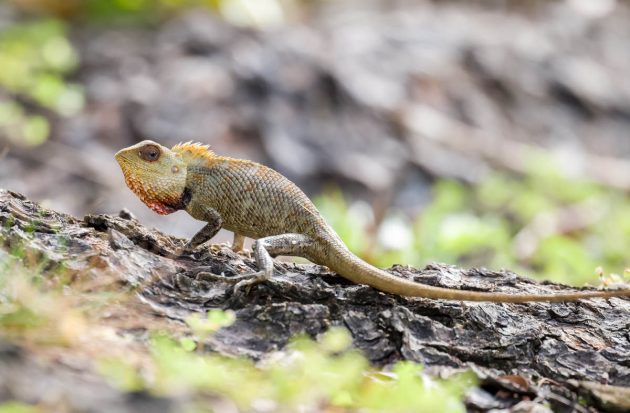
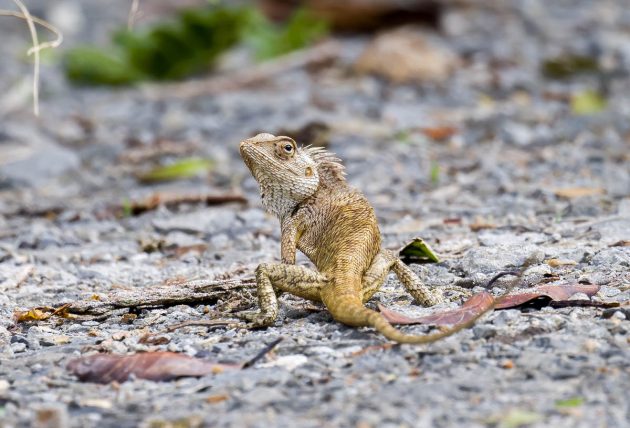
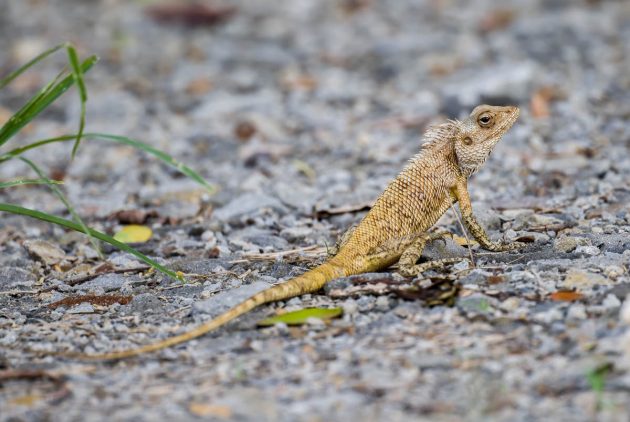


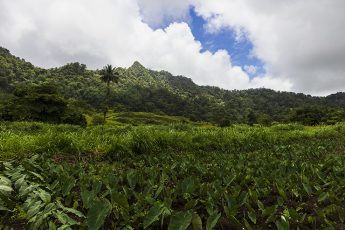
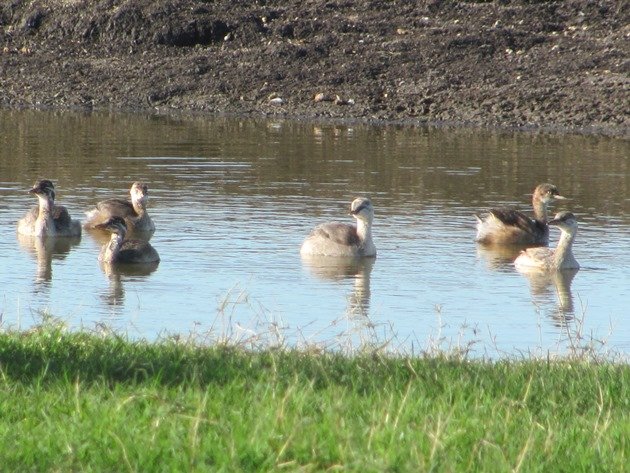
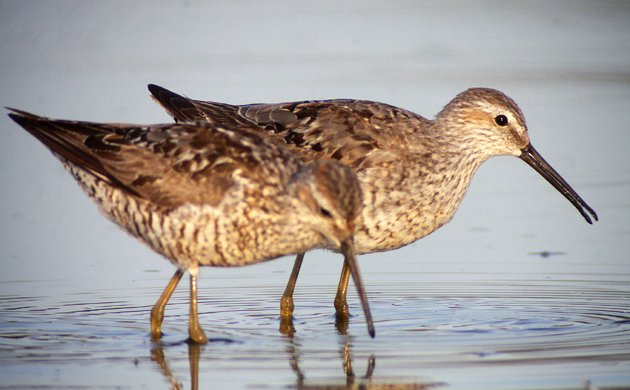

 New writers welcome – please contact us for details.
New writers welcome – please contact us for details.

















Thank you for your wonderful written about birds species in Tanjung Aru beach,Sabah.
which is one of sanctuary of birds in Sabah, I enjoyed reading your article , keep it up.Terima Kasih
What bird species can be observed near Tanjung Aru beach, and is it a significant birding location in Kota Kinabalu?
Visit us telkom university
Frankly, I do not think it is a major birding location on KK – but it is convenient to reach from the airport and has some interesting species if you have some time and do not want to drive far away from the airport. The species I saw there are all mentioned in the post, I cannot really add anything to this …